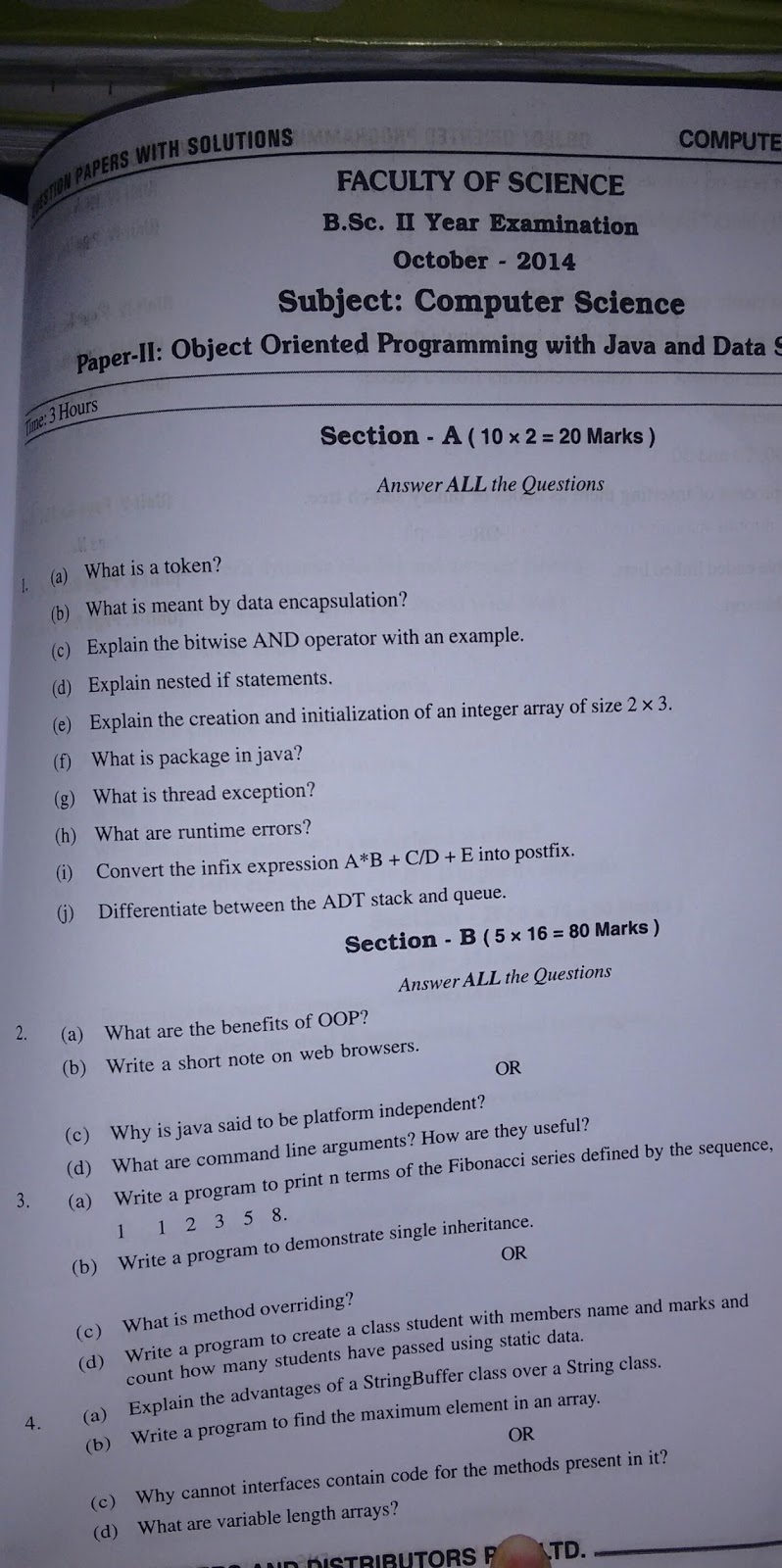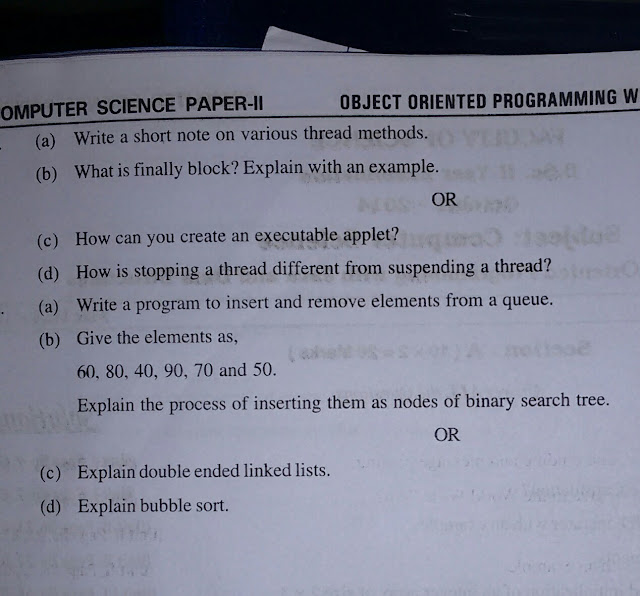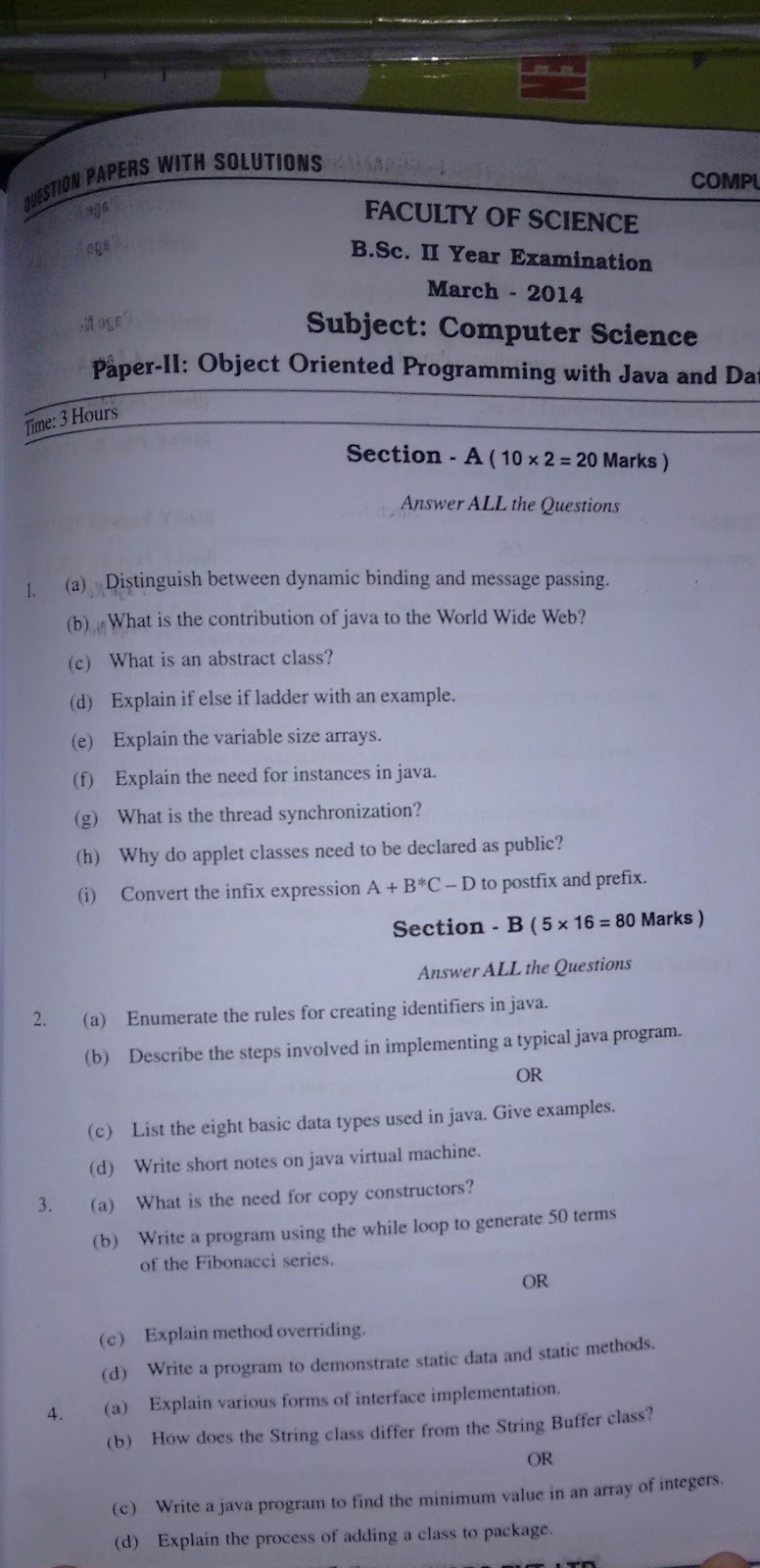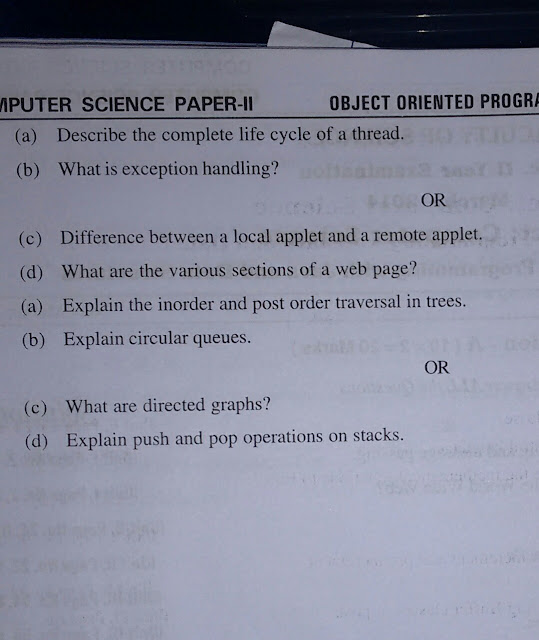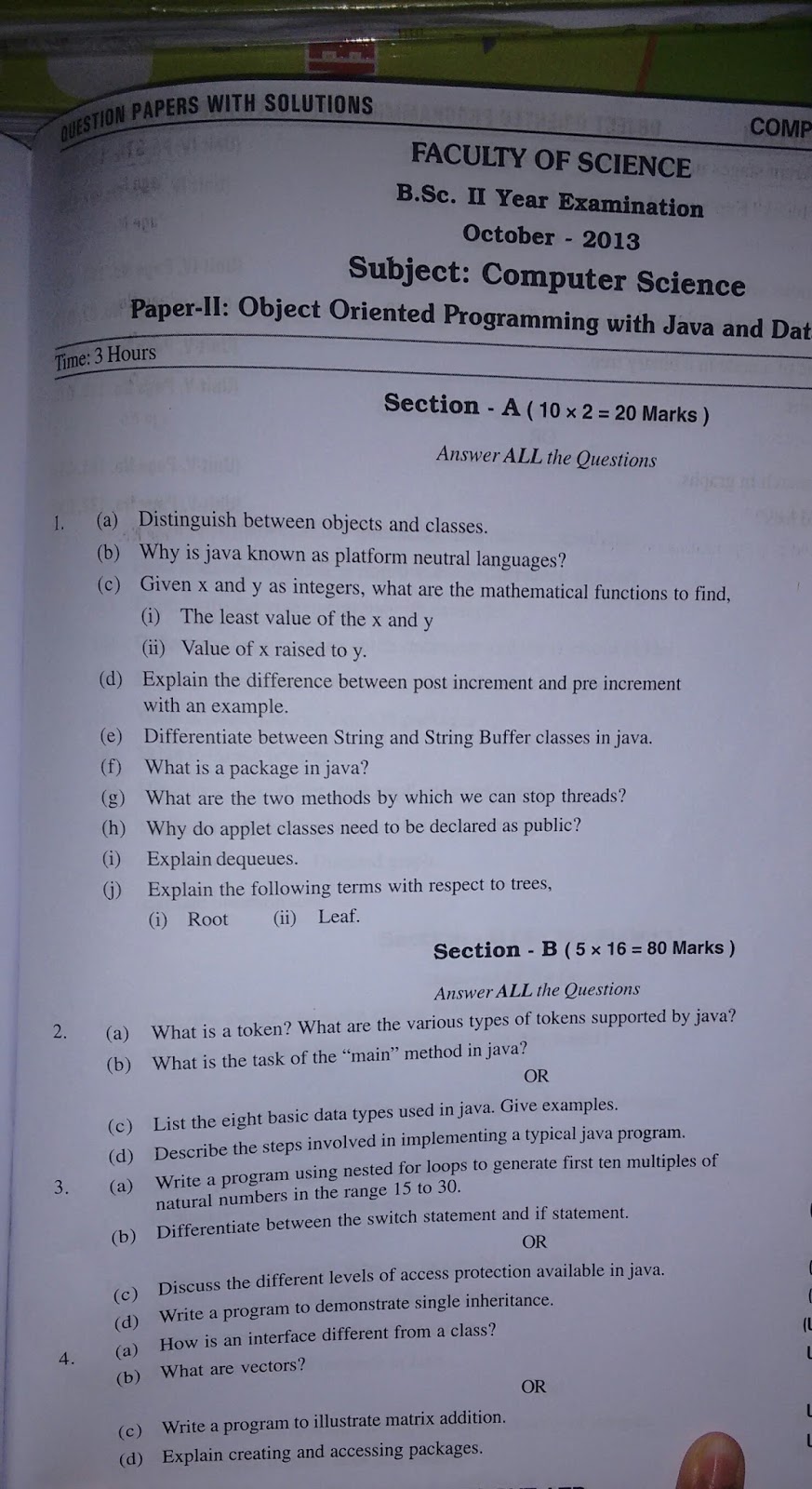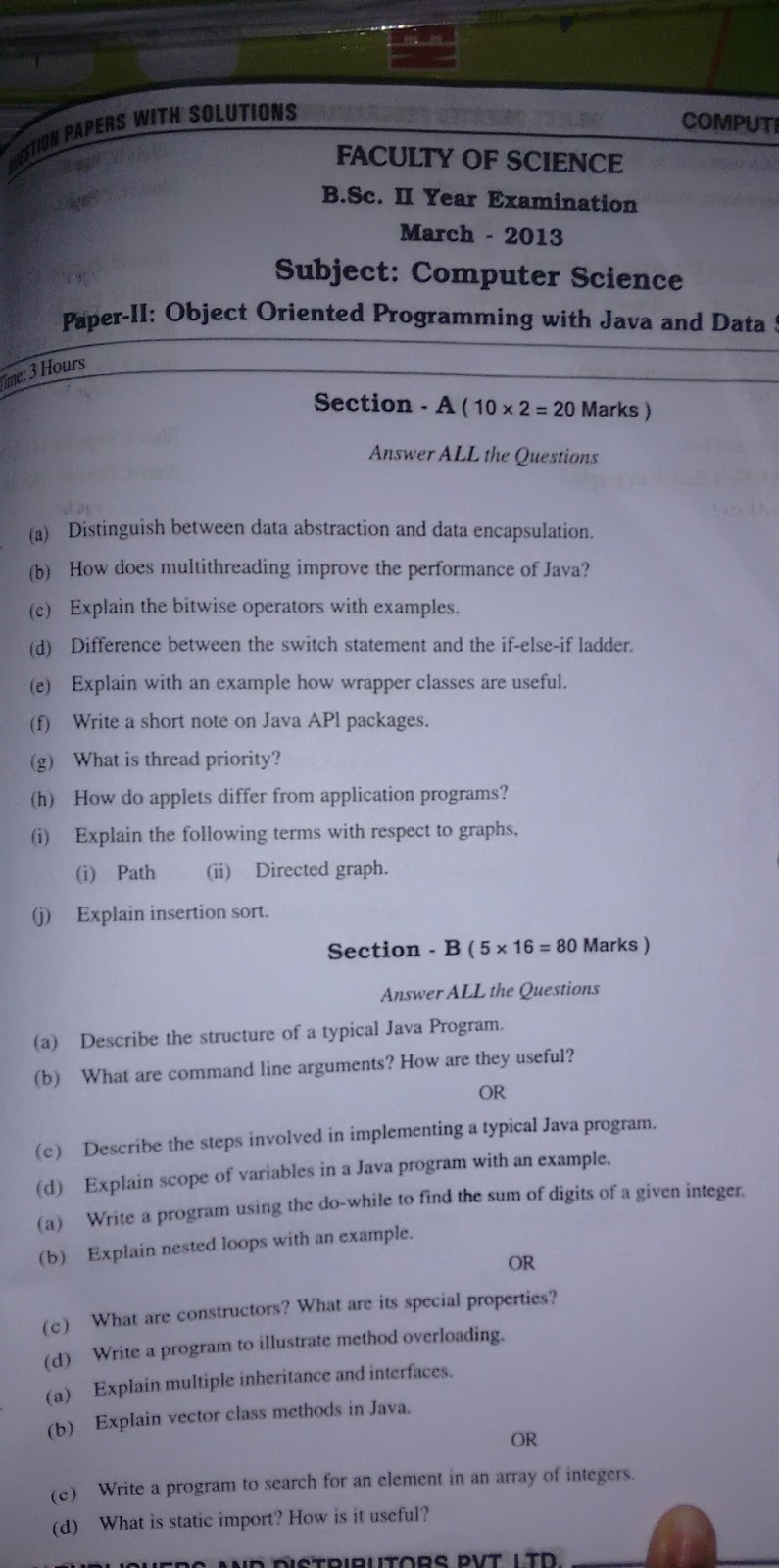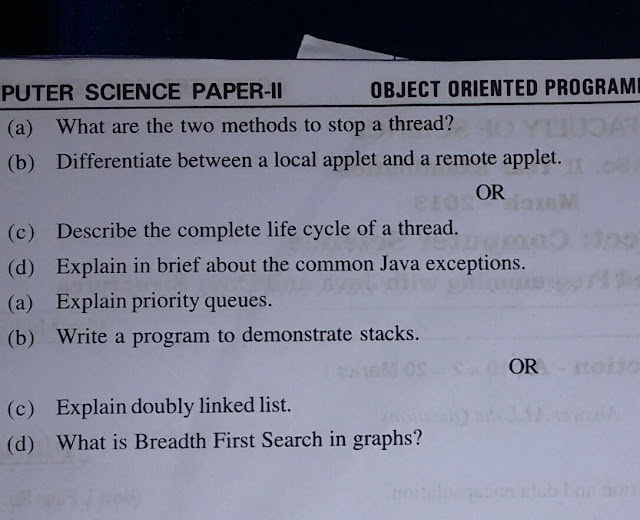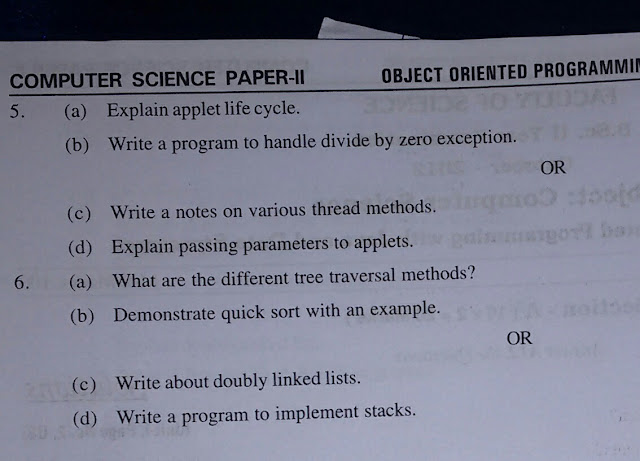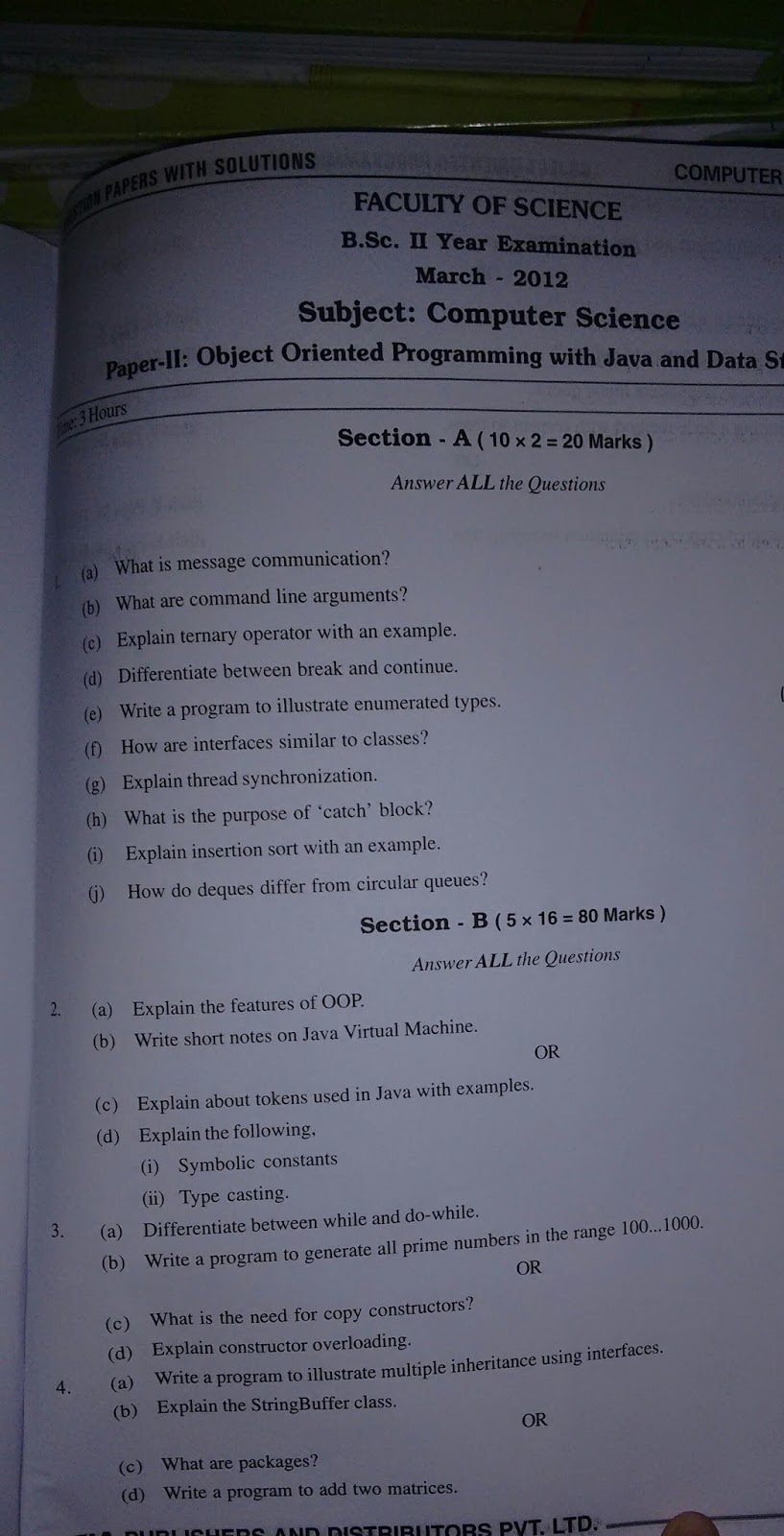C Viva Questions
1. What are Translators?
2. Difference between Interpreter and Compiler.
3. Features of “C” Language.
4. Applications of “C” language?
5. Structure of “C” program.
6. What is an Escape Sequence, What are they?
7. What is Character set?(about ASCII)
8. Mention ‘C’ tokens.
9. What are Keywords and Identifiers? Mention some of them.
10. What
are
constants? 11. What
are Integer Constants?
12. What
are Single character
Constants? 13. What
are string constants?
14. What
are variables? Types of variables?
15. What
are different data types that ‘C’ supports?
16. What
are fundamental datatypes? 17. What is
declaration of variables?
18. What
are various operators supported by ‘C’ , Explain with syntax and example.
(Arithmetic operators, Relational
operators, Logical operators, Assignment operators, Increment and Decrement
operators, Bitwise operators).
19. Precedence
of Arithmetic operators.
20. Mathematical
Functions.
21. Reading
a character(Explain ‘getchar’).
22. Reading
string of characters (Explain ‘gets()’).
23. Formatted
Input (Explain ‘scanf’).
24. Writing
a character (Explain ‘putchar()’).
25. Writing
string of characters (Explain ‘puts()’).
26. Writing
a formatted output (printf).
27. Explain
‘if’ structure.
28. Explain
‘if-else’ structure.
29. Explain
‘else-if’ structure.
30. Explain
‘Switch’ statement with syntax.
31. Explain
‘GoTo’ statement.
32. What is
looping? Types of looping statements.
33. Explain
‘While’ statement with syntax and example.
34. Explain
‘do-While’ statement with syntax and example.
35. Explain
‘for’ statement with syntax and example.
36. What is
an array?
37. What
are various string functions?
38. What is
a function declaration or prototype?
39. What is
a function?
40. What
are the parts of Function definition?
41. Explain
the function concept.
42. Explain
category of
functions.
43. What is
a ‘call by value’ or ‘pass by value’?
44.How
is an array element referred?
45.What
does an array name contains?
46.Uses
of arrays
47.What
are one dimensional arrays?
48.what
are two dimensional arrays?
49.What
are multidimensional arrays?
50.What
is the difference between getch() and gets()
51.How
any array is passed as an argument to a functions?
52.What
is scope of a variable?
53.What
is visibility of a variable?
54.What
is lifetime of a variable?
55.What
are the various storage classes?
56.What
are qualifiers?
57.What
are external and register variables?
58.What
are automatic and static variables?
59.What
are local and global variables?
60.What
is a structure?
61.Compare
arrays and structures?
62.How
elements of structure variables are referred?
What are bit fields?
What are bit fields?
63.What
is a Union?
64.Compare
Structure and Union?
65.What
are pointers?
66.How
pointers variables are declared?
67.What
do pointer variables contain?
68.How
do we access value pointed to by a pointer variable?
69.What
can be assigned to a pointer variable?
70.what
operations can be performed on pointer variables?
71.Compare
pointers and arrays?
72.What
is a NULL value?
73.What
operations are not allowed on pointer variables?
74.
What is preprocessor?
75.
What is # include statement?
76.
What is # define or symbolic constant statement?
What is a macro substitution?
What is a macro substitution?
77.
What is conditional compilation in preprocessor?
78.
What are .h files and what they contain? (Ans : stdio.h, conio.h, math.h,
string.h,type.h etc)


